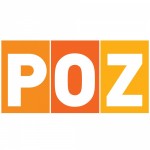Forty-eight weeks of treatment with Intelence (etravrine), combined with an optimized background regimen (OBR), is associated with greater viral load reductions and CD4 count increases compared to placebo among HIV-positive patients with limited treatment options due to drug resistance. These new data, from the two Phase III clinical trials of Tibotec’s recently approved non-nucleoside reverse transcriptase inhibitor (NNRTI), were reported on Monday at the 15th Conference on Retroviruses and Opportunistic Infections.
A significant advantage of Intelence is its resistance profile. While Sustiva (efavirenz), Viramune (nevirapine) and Rescriptor (delavirdine) are highly cross-resistant to each other, studies suggest that Intelence is effective against many strains of HIV resistant to these first-generation NNRTI options.
The ongoing 96-week Phase III studies, called DUET-1 and DUET-2, are comparing Intelence (200 mg) to placebo, both combined with a background regimen in approximately 1,200 treatment-experienced patients with documented resistance to NNRTIs and protease inhibitors (PIs). For all patients, the background regimen includes twice-daily Prezista (darunavir) plus Norvir (ritonavir), along with a choice of nucleoside reverse transcriptase inhibitors (NRTIs). Patients were also given the option of using the approved entry inhibitor Fuzeon (enfuvirtide).
DUET-1 Results
A total of 612 patients have been followed for 48 weeks and were included in the strict intent-to-treat analysis of the data. The average viral load upon entering the study was approximately 80,000 copies and the average CD4 count was 106 cells.
After 48 weeks of treatment, the average viral load reduction in the placebo group was 1.52 log. In the Intelence group, viral load dropped, on average, by 2.29 log. This difference between the two groups was statistically significant, meaning that it was too great to have occurred by chance.
While 39 percent had viral loads below 50 copies after 48 weeks in the placebo group, 60 percent had viral loads below this level in the Intelence group—a statistically significant difference.
CD4 gains of 103 cells were documented in the Intelence group after 48 weeks, compared with an average CD4 gain of 74 cells in the placebo group. This difference was also statistically significant.
The most commonly reported side effects among patients receiving Intelence, compared with those receiving placebo, were rash (22 percent versus 11 percent), diarrhea (14 percent versus 24 percent) and nausea (15 percent versus 15 percent).
DUET-2 Results
A total of 591 patients enrolled in the study were included in the 48-week intent-to-treat analysis. The average viral load upon entering DUET-2 was roughly 63,000 copies, and the average CD4 count was approximately 105 cells.
Average viral load reductions, after 48 weeks, were 1.46 log in the placebo group and 2.22 log in the Intelence group. This difference was highly statistically significant.
Undetectable viral loads (below 50 copies) were seen in 41 percent of the placebo recipients, compared with 61 percent among those receiving Intelence for two weeks.
CD4 counts increased by 72 cells in the placebo group and 94 cells in the Intelence group.
The differences between the placebo and Intelence groups, with respect to viral loads below 50 and CD4 cell count improvements, were statistically significant.
As for side effects, the most common in the Intelence group, compared with the placebo group, were diarrhea (22.0 percent versus 22.6 percent), rash (16.6 percent versus 11.1 percent) and nausea (14.6 percent versus 10.8 percent).
Resistance Data
Among patients who entered both studies with drug-resistance tests showing high-level resistance to all of the approved antiretrovirals, meaning that they didn’t have an “active” drug to include in their OBR, 33 percent of those in the Intelence group, compared with no patients in the placebo groups, had viral loads below 50 copies after 48 weeks of treatment. Among patients who did have active agents to include in their OBR, responses to Intelence treatment was significantly better—at least 60 percent of those in the Intelence groups who had at least one active agent in their OBR had viral loads below 50 copies after 48 weeks, compared with 26 percent of those in the placebo group.
As summarized by the study presenters, Intelence provides superior efficacy over placebo and extends and enhances the therapeutic options available for treatment-experienced HIV-positive patients.





1 Comment
1 Comment